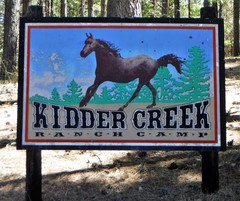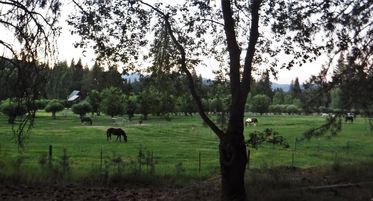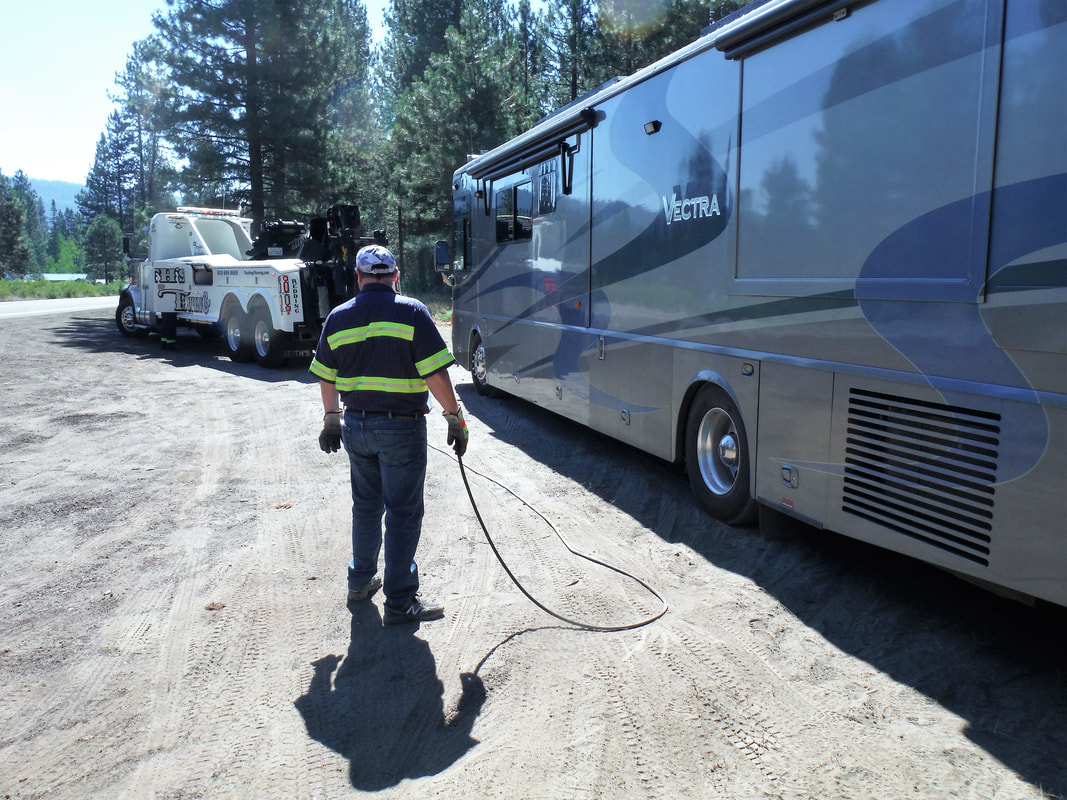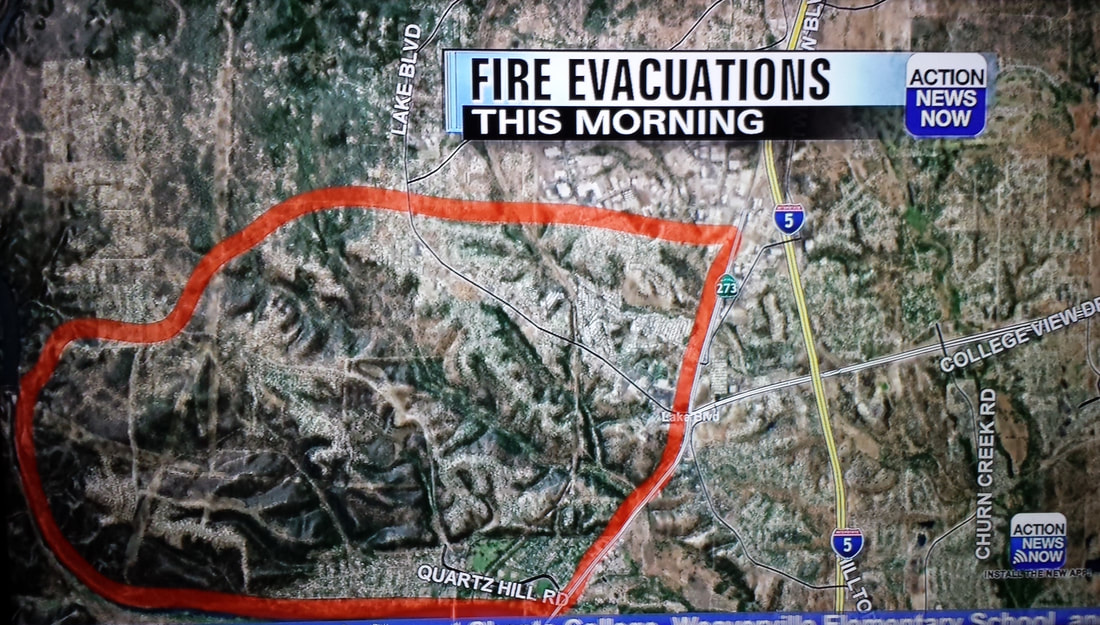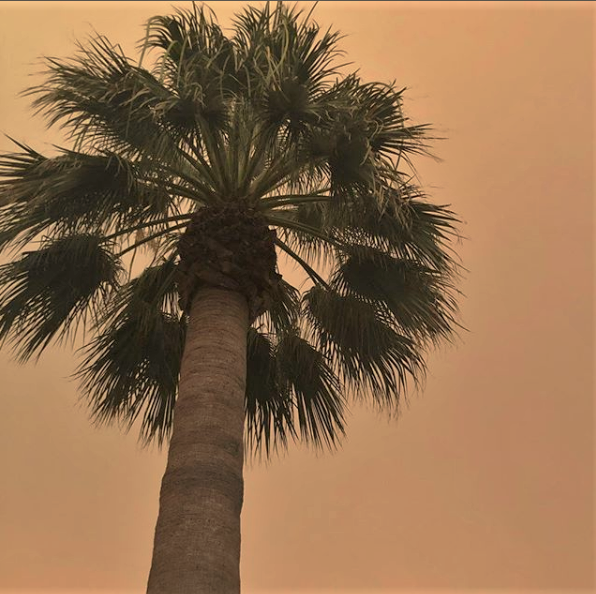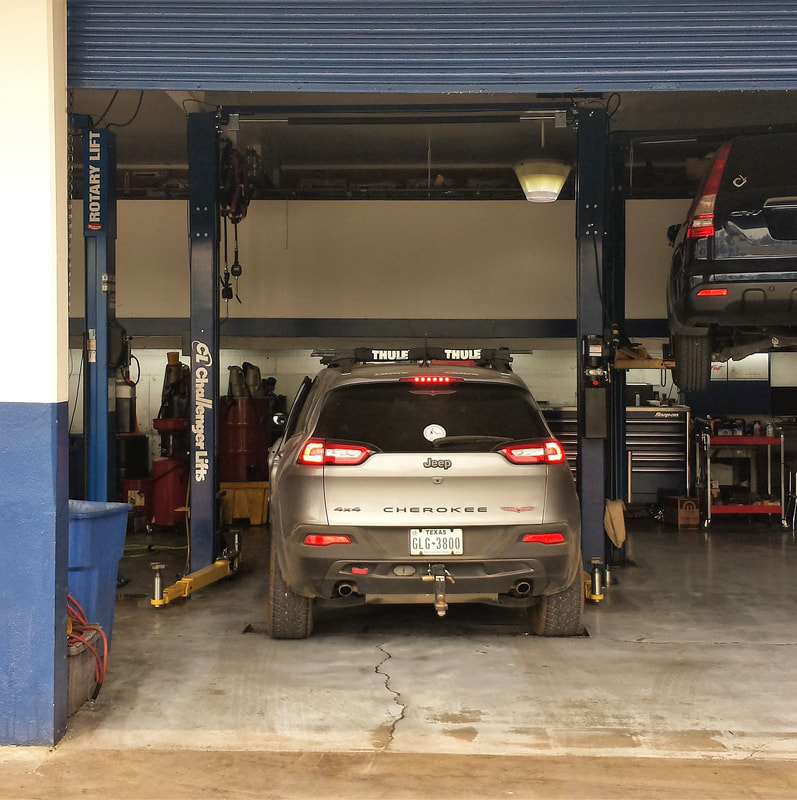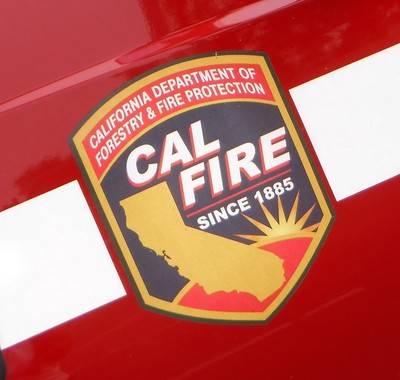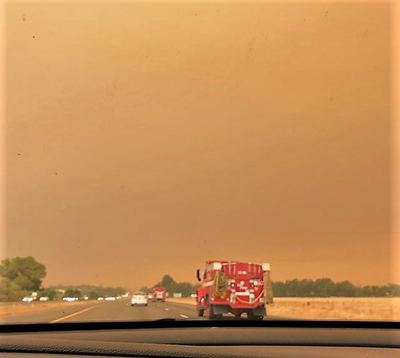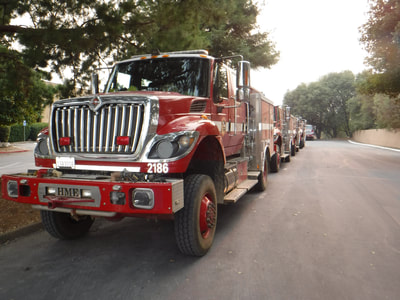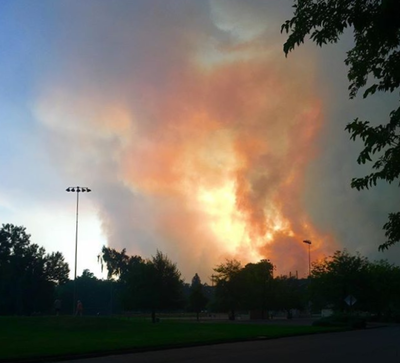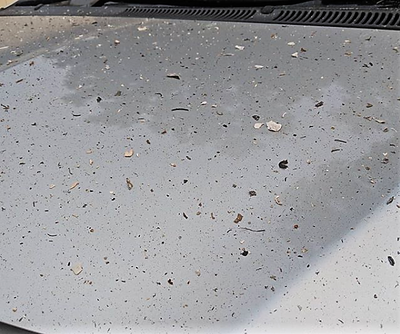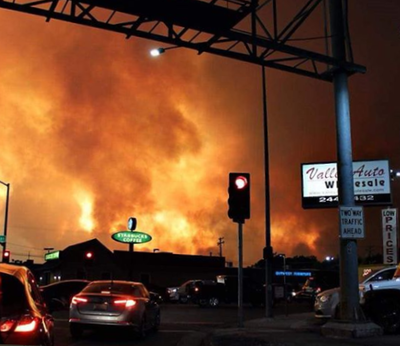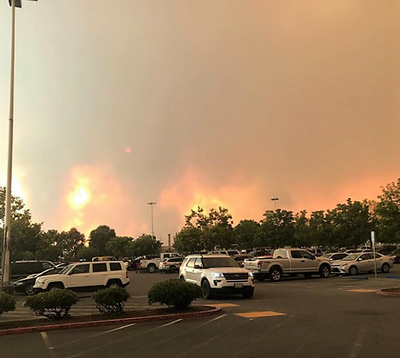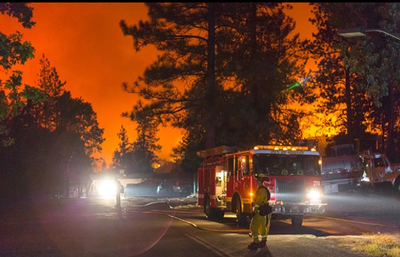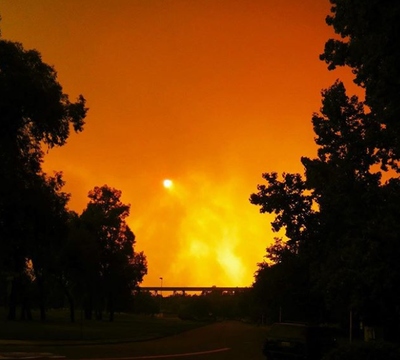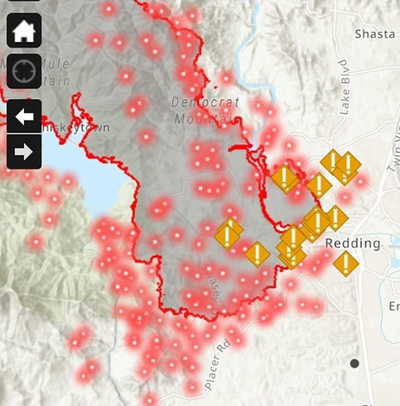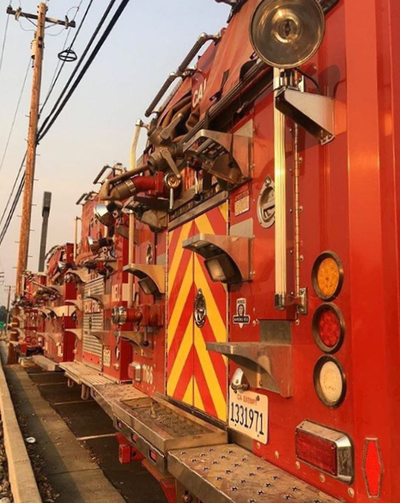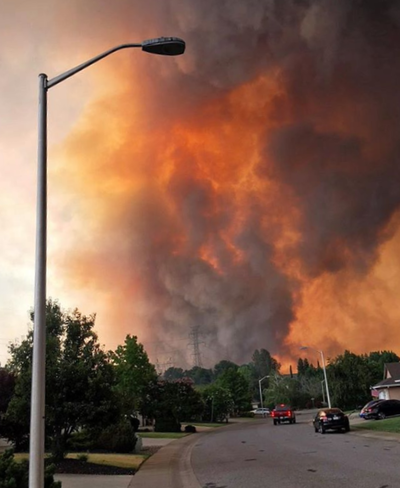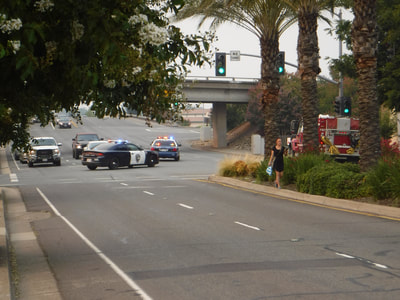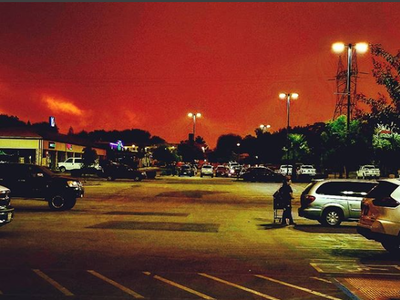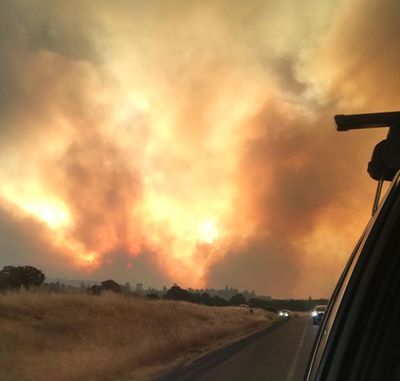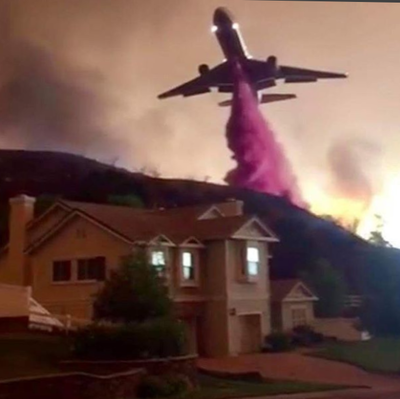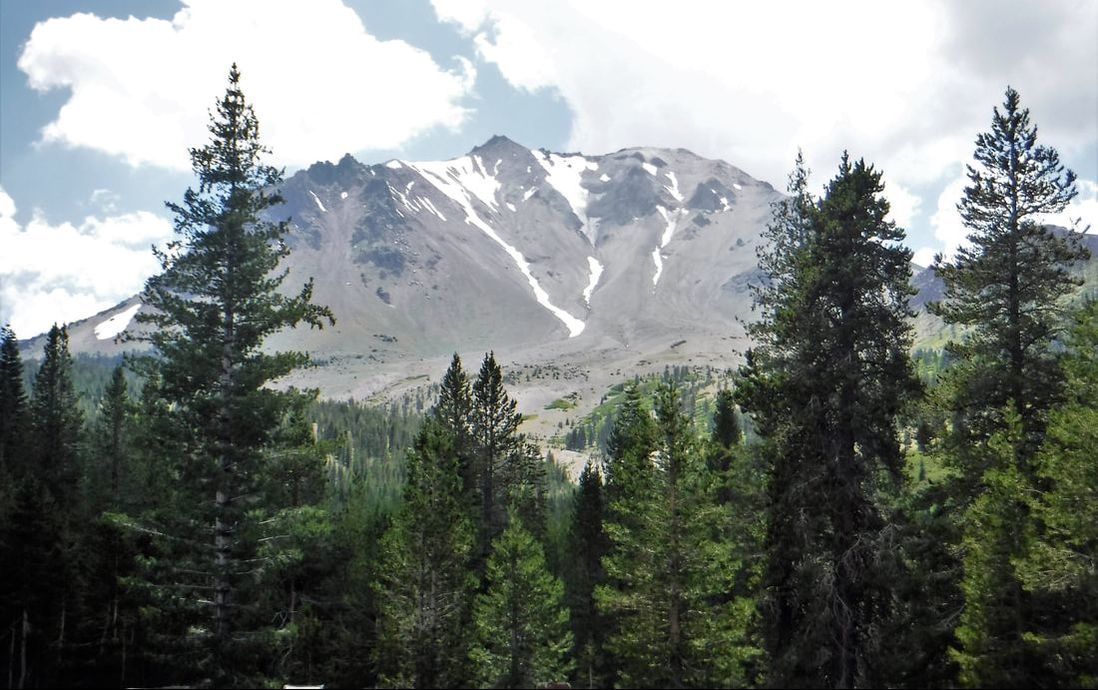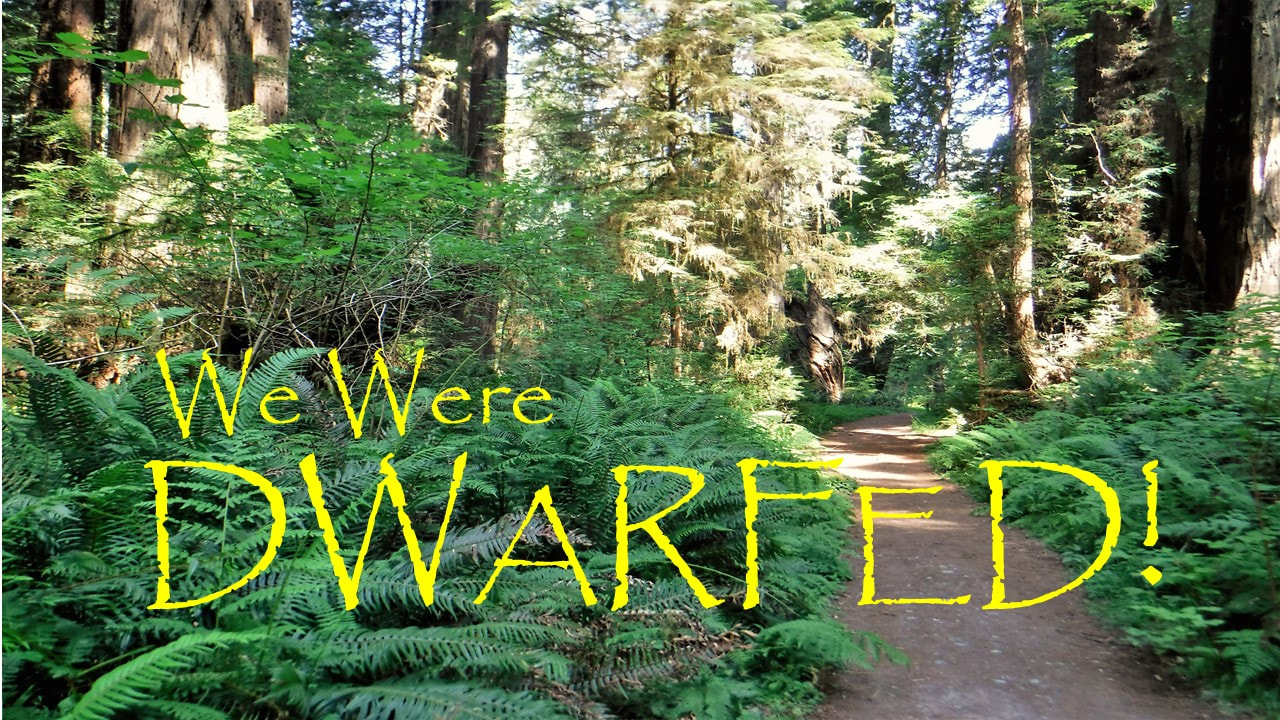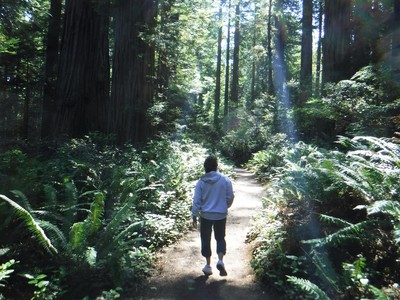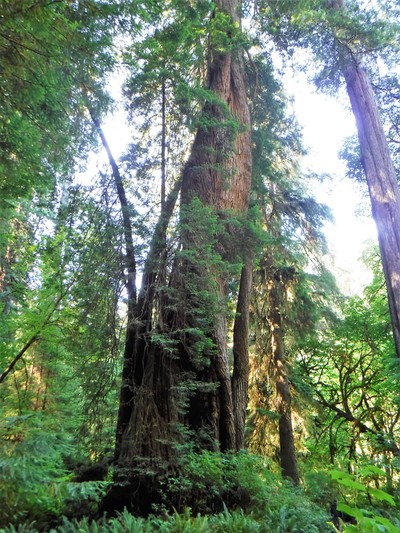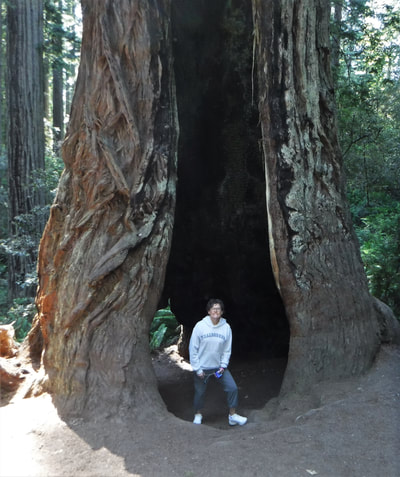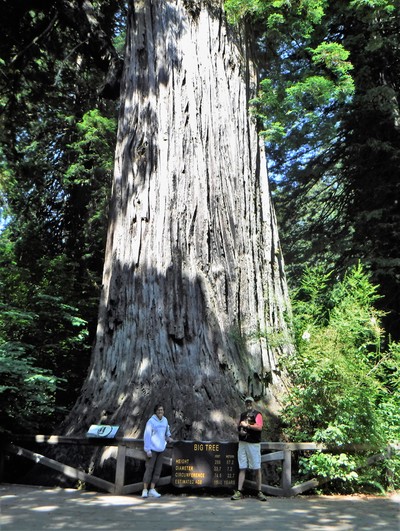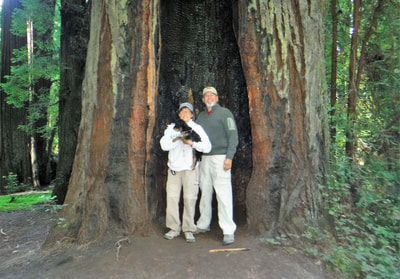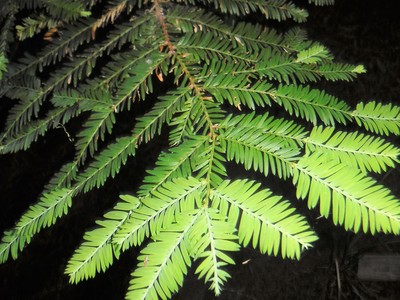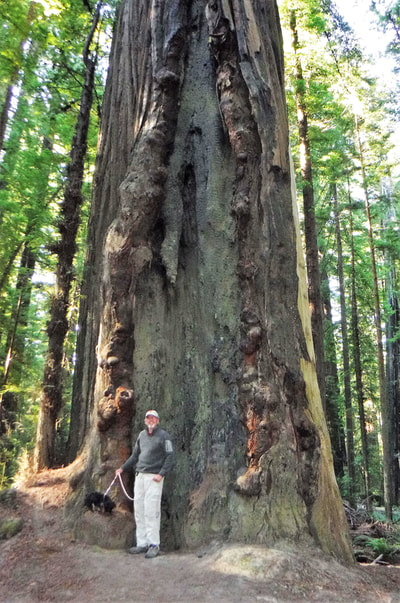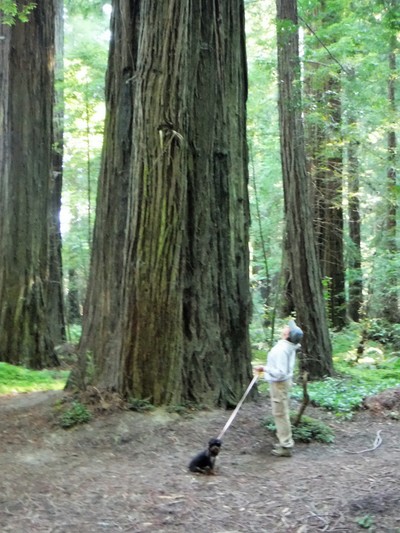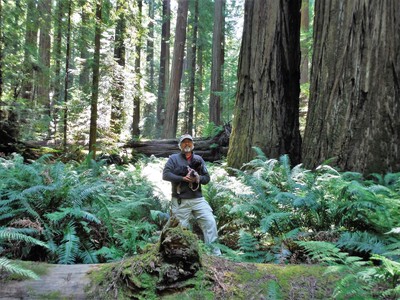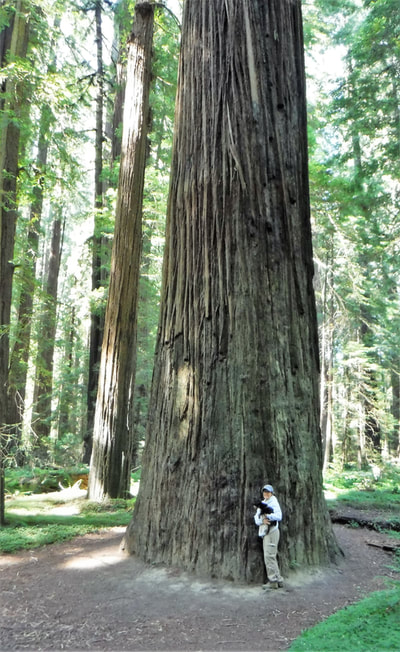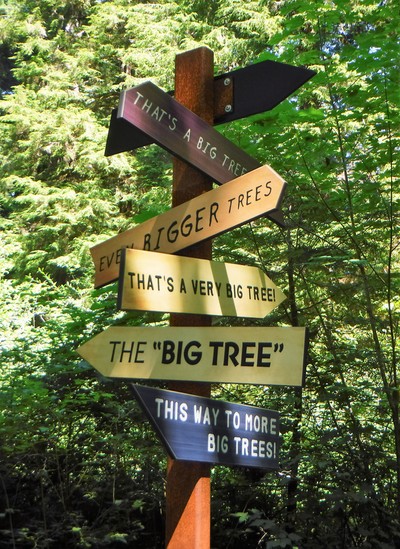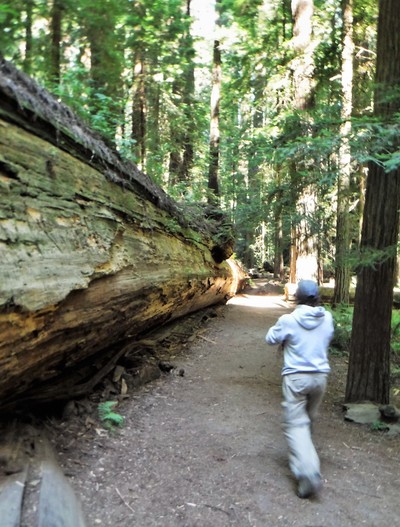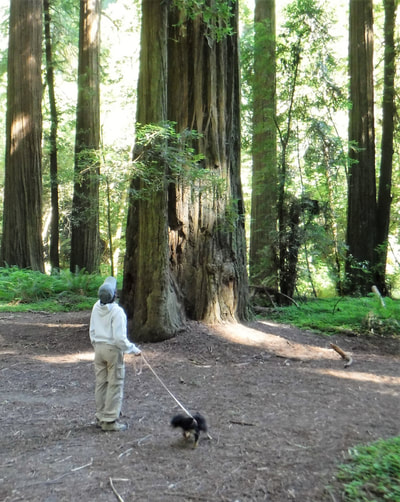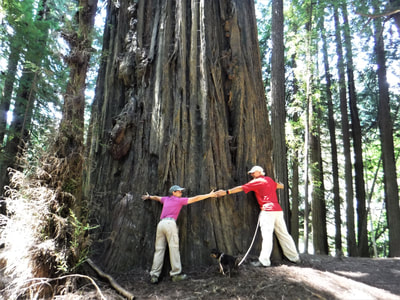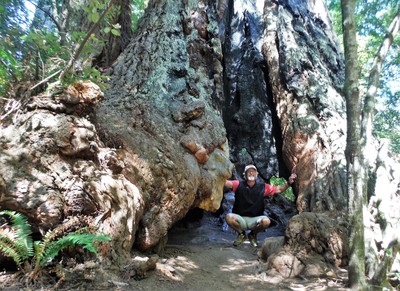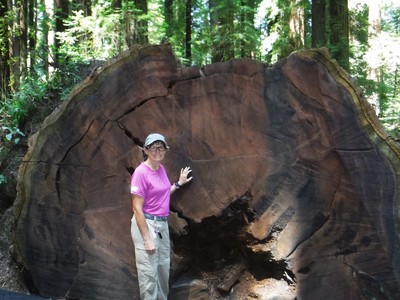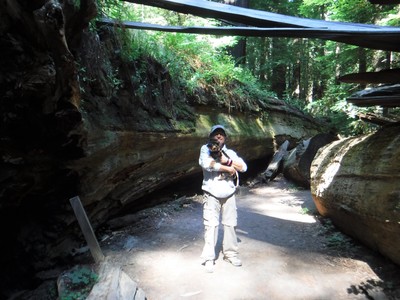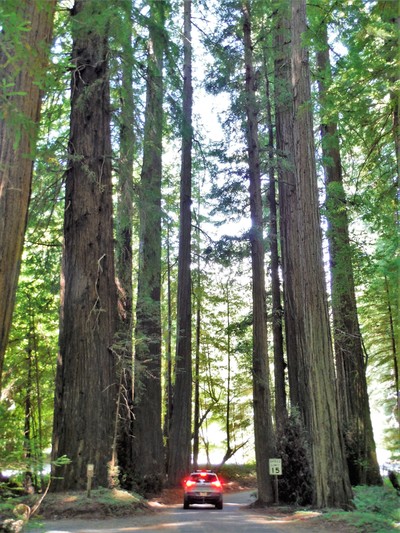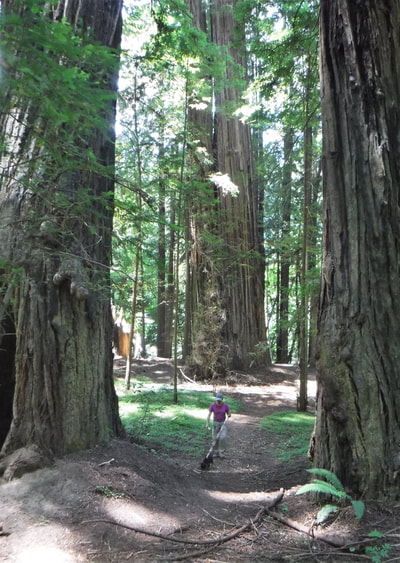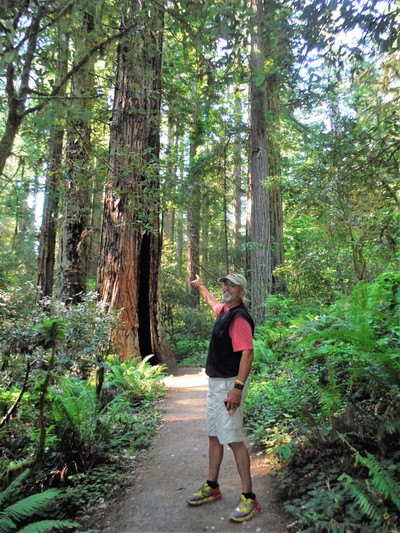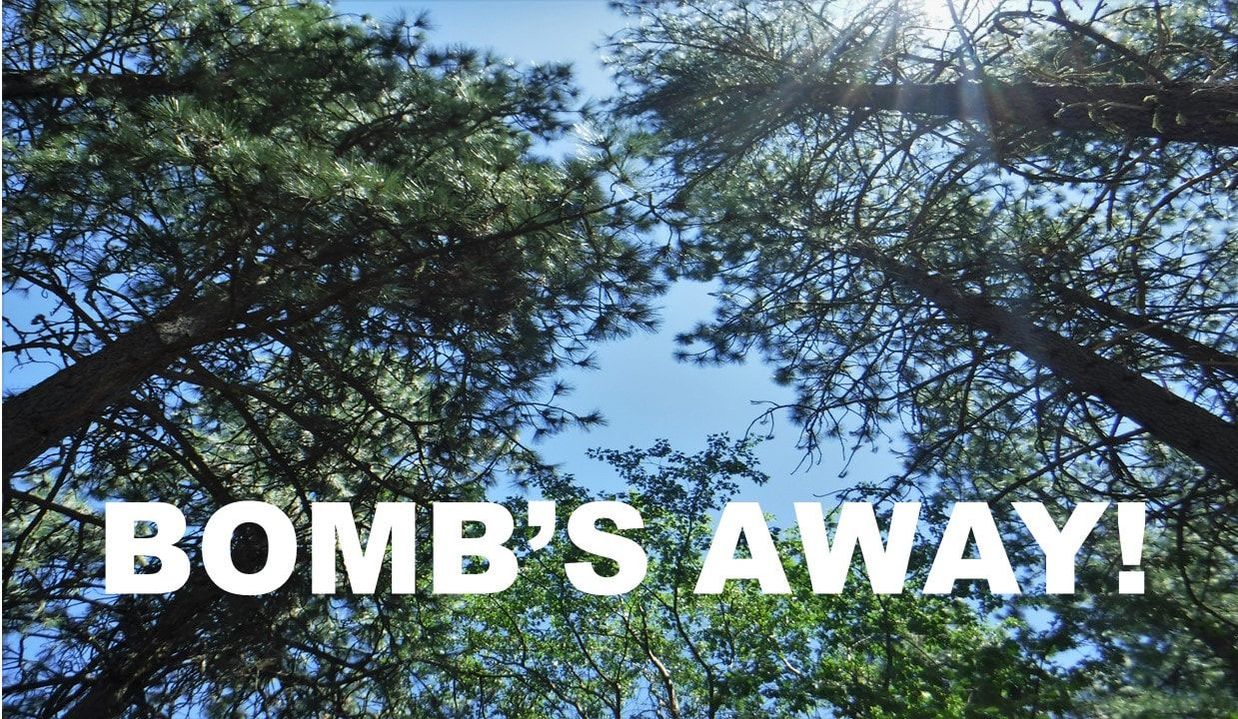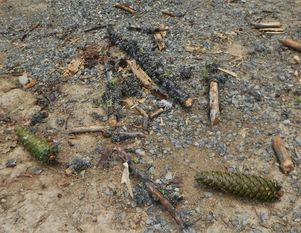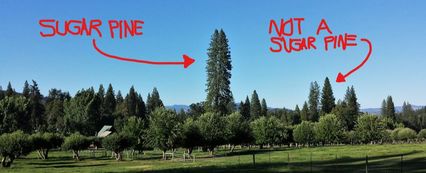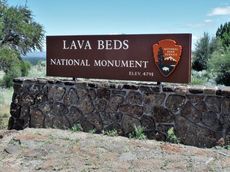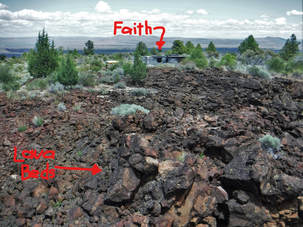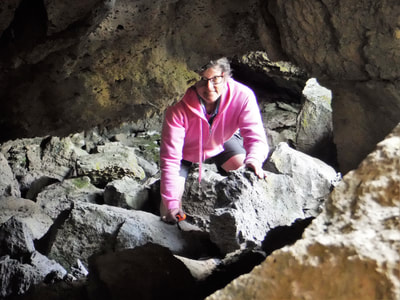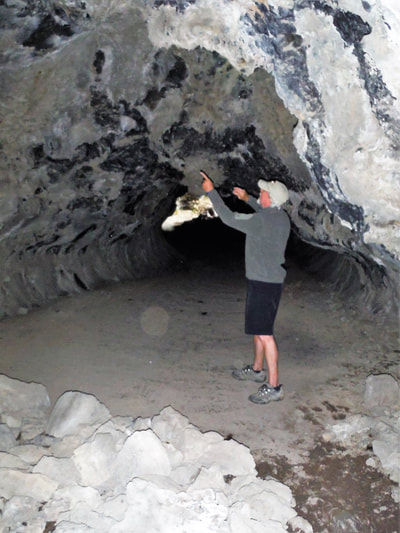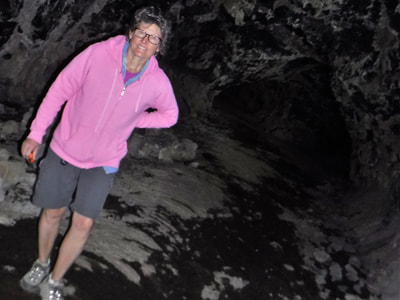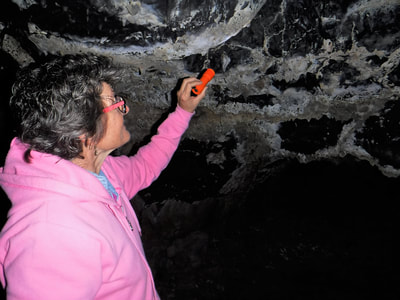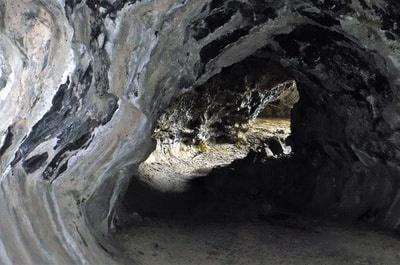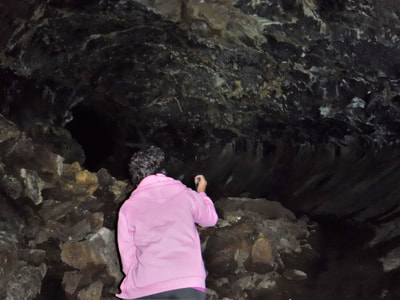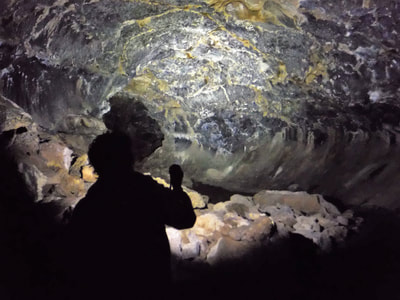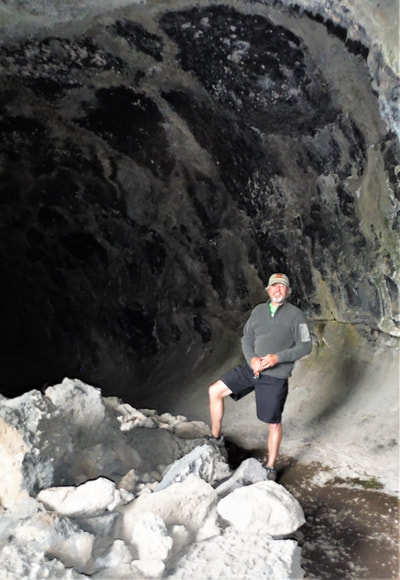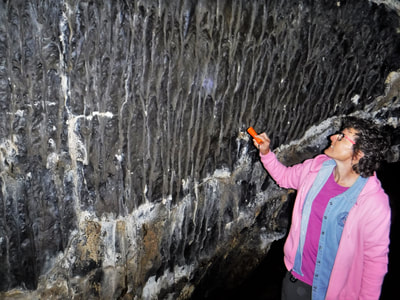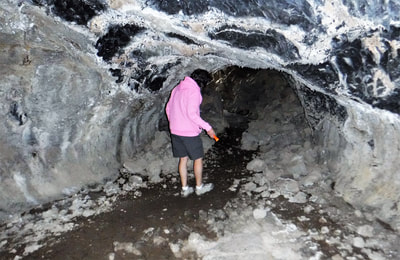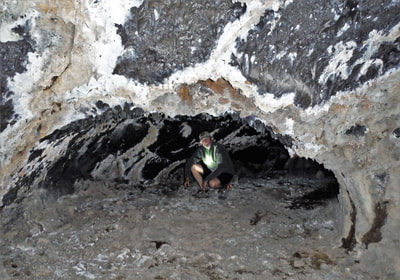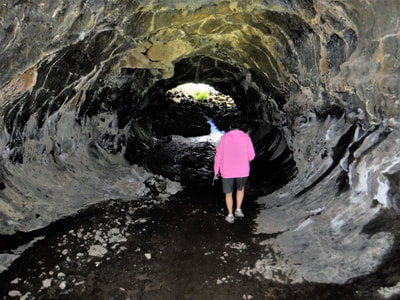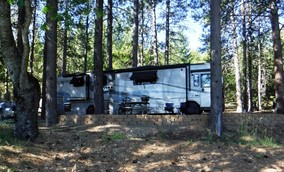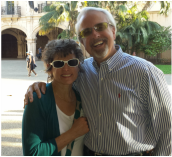trouble, then fire!
< A SAGA >
| We were only about ten miles outside Lassen Volcanic National Park when Ken noticed the gauge for the primary air tank on Faith (our motorhome) – the tank was not holding pressure. He pulled over, fearing that the air pressure would drop too much and he would lose the ability to control braking. God provided a nice, wide spot beside a bubbling creek for us to stop safely. At the time, we were crossing the northern Sierra Nevada’s at about 4500 feet in elevation between Redding, California, and Reno, Nevada. There was no cell signal or Internet access. We were at eastbound mile marker 61.89 on California HWY 44. Most people call this part of California “the middle of nowhere.” We were fortunate to discover that the Pacific Crest Trail poked out of the woods just down the road. And where it appeared there was an emergency cell station for hikers of the PCT. It came in handy for us; we used it in order to locate and get a tow truck to come to our aid. The tow truck showed up as promised. But instead of towing us, he simply filled Faith’s air tanks which would allow Ken to drive the motorhome “normally” downhill to the Freightliner shop in Redding. It was an exciting trip because Ken did not want to use the brakes (using the brakes consumes air pressure). Going down a mountain and not using the brakes … hmmmmm? As he descended from 4500 feet to 300 feet in a cautiously managed 62 mile drive, Ken slowly followed the tow truck down the winding mountain road. He made it the whole way without touching the brake pedal except when he had to come to a stop behind the tow truck. He had never appreciated the engine’s compression braking system more! Whew! We checked in at Freightliner in west Redding and a quick diagnosis indicated a failed cartridge in the air dryer. Unfortunately, they did not have the part in stock. They promised an overnight delivery of the needed part, so Deb and I checked into a local motel. It was just about the same time that an adrennaline-filled Ken pulled Faith off the road in the Sierra Nevada’s, that a trailer blew a tire on California HWY299 near Whiskeytown Lake, about 100 miles away. When the trailer tire blew, the wheel’s rim scraped across the ground and, causing a stripe of sparks on the highway, started a small roadside fire. That small fire would grow to become the Carr Fire, infamous in the history of northern California for [at the time] being the area’s largest and most explosive wildfire ever. Unbeknownst to us, the Carr Fire advanced eastward overnight and by morning was threatening the western side of the city of Redding. The area where the Freightliner shop is located, where Faith had spent the night, was already evacuated by the time that we had climbed out of bed. All of a sudden, our brief diversion to Redding had become an extended stay. Our chance to get back to Faith to collect more clothes and meds had closed without us even knowing. It was the travel week for SOWERs – the week we have each month to get from one assignment to the next. We were Group Leaders for the August project and were expected to be at Sugar Pine Camp in two days. It was not looking good for us to be on time for that arrival deadline. Ironically, the Ferguson Fire near Yosemite, is simultaneously burning just a couple miles north of Sugar Pine Camp. We were going to be dodging fire and smoke no matter where we spent the next week, it seemed. | Driving around the town of Redding was eerie. Under normal conditions this is a beautiful city surrounded by beautiful mountains. The horizon is dotted with forests and lakes. Palm trees line the streets. The Sacramento River flows through the center of town. But the smoke obscured all of that, not to mention the sun and the moon. About one-third of the city had been evacuated -- those who remained were staying indoors to avoid the unhealthy smoke. Many of the streets were virtually empty except for police and fire trucks. Helicopters and retardant drop planes, in support of the ground-based fire-fighters, flew overhead. Television reports of the condition of the city were not encouraging, either. The spirit of the city was waning by virtue of the fact that 175 square miles of land (at the time) along the west side of the city had burned (for reference, the city of San Francisco is 47 square miles). In spite of the fire fighter’s best efforts, after six days the fire was only 5% contained; after a week it was only 20% contained. Each day we hoped for the evacuation order to be lifted and for enough staff to show up at Freightliner to be able to repair Faith. But we had now been in the Redding motel for one week. At this point, we recognized how trivial our troubles were in light of the Carr Fire and the 1000+ homes that had been consumed by the fire. We had kinduv become numb in our concern for Faith: If it ends up in the path of the Carr Fire, so it will be. God is in control. There is nothing we can do about it. As a matter of stewardship, we wanted to get busy. We made a few phone calls to see where we could go. That was the morning when we started the Jeep and it showed about a dozen fault codes on the screen. Getting it in gear was like a bucking pony – but we got it to move and drove right to the local Jeep dealer fearing the worst. Would it be that we could soon be without either of the vehicles that we drove into Redding? Fortunately, the part of town where the Jeep dealer was located had just received repopulation orders from the fire chief that very morning. Better yet: In about three hours they had diagnosed and fixed the problem. Whew! One of our phone calls paid off. We were able to return to Kidder Creek and stay in one of their trailers (without our motorhome). They made accommodations for us to stay in their RV Park. We checked out of our motel the very next morning and drove to Kidder Creek. We will return to Redding when Faith ha been determined roadworthy. Or not. It is out of our control at this point. When ee learned that the evacuation order for the Freightliner part of town had been lifted, we checked to see if our part had been received. They said it had not. In fact, Freightliner said the part was “AWOL” – after checking with the carrier the team at the shop did not know where it was. It was assumed to be in the terminal near the airport with the thousands of other packages that had come in during the fire. Surely it would surface in a day or two, right? Freightliner gave up waiting and re-ordered the part for us. It came the next day and was installed in less than twenty-four hours. Bravo team! |
| Lassen Volcanic National Park is renown for its compelling history and diverse volcanic scenery. From broad lava slides and jagged crags to barren, devastated plains. And in areas of recovery, from forested mountains to blooming meadows. And from each year's snowfall there are waterfalls and small lakes. All of this in the shadow of the remnant cinder cones that off-and-on erupted in ruin from 1914 to 1917. | |
| | The park also offers several geothermal displays. There are steaming fumaroles and hydrothermal vents that spot sections of the landscape. This was the most interesting part of our visit to me. Bubbling mud pots and the smell of sulphur in the air reminded me of our trips to Yellowstone. Be sure to explore some of the trails for full sensory stimulation! |
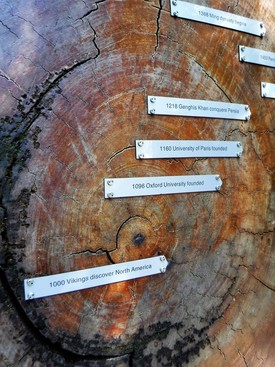
The redwood forests seem to create their own weather. As you enter a grove, you will feel the humidity increase and the temperature drop. You will notice moss and lichens and ferns growing abundantly (see this blog's title slide). The last time I was here (it was 1969, I think) I recall a slight mist and drizzle in the air as you hiked through these grand trees, but on this visit the forest was dry.
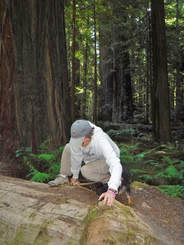
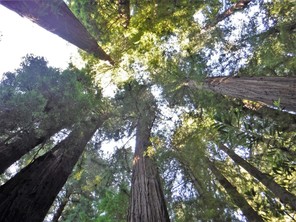

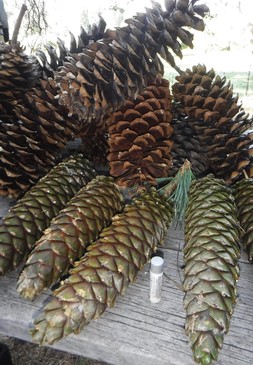
The largest cones we found at Kidder Creek were [only] about eighteen inches long. We collected a few on our picnic table. The greener ones in the picture on the left are still tacky with pine pitch and fell during our stay. The brown ones near the top of the photo fell before our arrival and are in various stages of drying and ejecting their seeds. I placed a tube of chapstick in the center of the picture to give you an idea of scale.
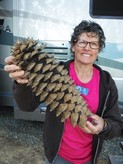
| With a succession of snaps, and breaking pine boughs, the Sugar Pine's cone hits the ground with a determined thud. Around it crashes all the coincident debris that it has accumulated in its downward wake. The racket is as if somebody unloaded a wheel-barrow of kindling and bricks over the side of a twenty-story building! It’s not possible to ignore the ear-jarring avalanche of branches and boughs as the cracking conglomeration is ultimately halted by solid ground. |
| [Ken 06/30/2018] I want to be in the group who think this park's name should be changed from "...Beds" to "...Tubes." The best part of this National Monument is what is underground, in my opinion. Yea, above-ground is a landscape full of interesting volcanic cones and a half-dozen sizable lava floes that stripe the California high desert, but what is more fascinating are the hundreds of now empty lava tubes under the surface of the earth. |
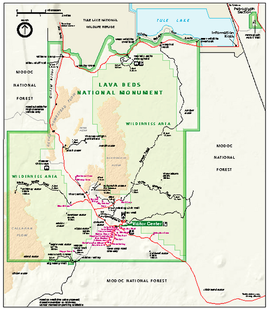
The pictures below seem to illustrate well-lit catacombs. Let me assure you that all of the light we had was from two small flashlights and the flash on our cameras. In real-life, once you have moved away from places where the tubes penetrated the surface of the earth, the "caves" are as dark black as pre-historic pitch.
| Located in extreme northern California, this National Monument is an out-of-the-way destination, but worth the effort. Once you have been "sanitized" by the park staff (to mitigate the spread of white-nose bat disease), most of the "caves" are self-paced and self-guided -- all you need is a sweatshirt and a good flashlight (it is very dark inside!). You may also want to bring extra batteries. The National Park Service has categorized a dozen or so of the more popular "caves" by their difficulty so you can know a little about what you would be getting into before personally undertaking the steep descent into alien darkness. | Deb and I explored "caves" rated both Easy and Most Difficult and found you could see and experience quite a lot on both without having to use any special spelunking skills. The length of the "caves" vary from a few hundred feet to more than a mile long. If adventure is your thing, we saw several open, inviting crevices where knee pads would be a good idea. If you would like to go on a guided tour, the park offers a couple options (reservations required). If you are interested in a paved and lighted path, the park offers a "cave" like that, as well. In any case, "Watch Yer Head!" |
